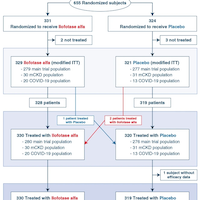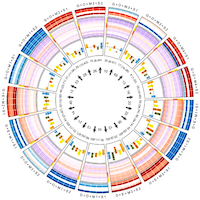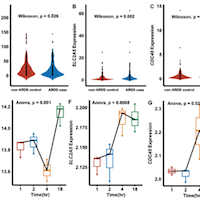Tag: sepsis

Fluid Personalization and Vasopressor Decisions in Early Sepsis Management
In this randomized vignette survey study of US critical care clinicians, we found that fluid volume already received was associated with the largest changes in decisions to administer additional fluids or initiate vasopressors... read more

AKI Risk Factors in ICU Patients Using Colistin
Colistin, an antibiotic of polymyxin group, has recently been increasingly used in the treatment of multidrug resistant gram-negative bacteria. However, it has serious adverse effects such as acute kidney injury (AKI). We... read more

Sepsis Management: PIRO and MODS
This book is unique in approaching multiple organ dysfunction syndrome (MODS) from the perspective of its pathophysiological mechanism, and addressing aspects that are overlooked in most of the available literature. Eminent... read more

Ilofotase Alfa Doesn’t Improved Survival Among Critically Ill Patients with SA-AKI
Sepsis-associated acute kidney injury (SA-AKI) in patients admitted to an intensive care unit is associated with significant morbidity and mortality. There is currently no pharmaceutical treatment. Although we found no... read more

Uncovering Heterogeneity in Sepsis
Among critically ill patients with sepsis, subtype strategies using clinical, biomarker, and transcriptomic data do not identify comparable patient populations and are likely to reflect disparate clinical characteristics... read more

Pediatric Sepsis Phenotype with Persistent Hypoxemia, Encephalopathy, and Shock
We derived and validated the persistent hypoxemia, encephalopathy, and shock phenotype, which is highly reproducible, clinically relevant, and associated with HTE to common adjuvant therapies in children with sepsis. We... read more

Handbook of Evidence-Based Critical Care
This updated and revised edition of the classic bedside pocket reference remains the gold standard in critical care medicine. The new edition maintains Dr. Marik's trademark humor and engaging writing style, while adding... read more

Genetic Causal Factors of ARDS
This comprehensive study highlights the importance of utilizing the MR-pheWAS framework in unraveling the complex etiology and pathogenesis of ARDS, and further underlines the value of integrating blood-based biomarkers into... read more

Screening Tools for Sepsis Identification
The authors undertook a rapid review to determine the suitability of sepsis screening tools in the emergency setting with regard to sensitivity and specificity of sepsis diagnosis. The review recognized that there is currently... read more

Endotoxin Role in Septic Shock
Septic shock can be caused by a variety of mechanisms including direct effects of bacterial toxins such as endotoxin. Annually, approximately 5–7 million patients worldwide develop sepsis with very high endotoxin activity... read more

Simple Blood Test Indicating Sepsis Relapse
Sepsis is often not adequately diagnosed at the early stage when it could still be potentially avoidable. In this report, we describe the dramatic hematological changes found in the blood of a sepsis survivor just after discharge... read more

Sepsis: Definitions, Pathophysiology and the Challenge of Bedside Management
A comprehensive and state-of-the-art resource for clinicians who care for patients with sepsis and research scientist alike. Patients with severe sepsis requiring ICU admission have very high rates of ICU and overall... read more

COVID-19-associated Sepsis: Incidence and Mortality
In this retrospective cohort study of hospitalized adults, SARS-CoV-2 accounted for approximately 1 in 6 cases of sepsis during the first 33 months of the COVID-19 pandemic. In-hospital mortality rates for SARS-CoV-2–associated... read more

Levels of Intensive Care vs. In-Hospital Mortality in Patients Hospitalized for Sepsis Stratified by SOFA
Patients hospitalized for sepsis with Sequential Organ Failure Assessment (SOFA) scores greater than or equal to 6 in the ICU or HDU had lower in-hospital mortality than those in the general ward, as did those with SOFA scores... read more



